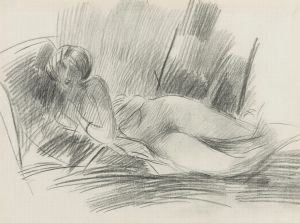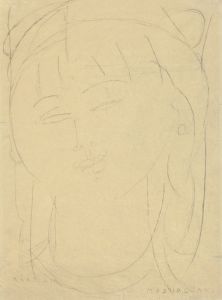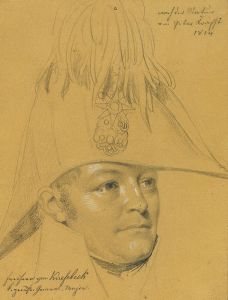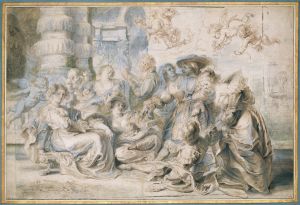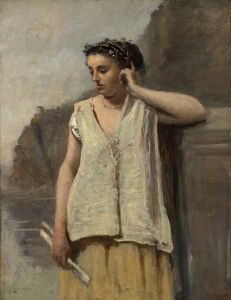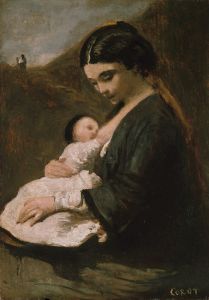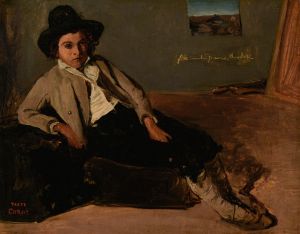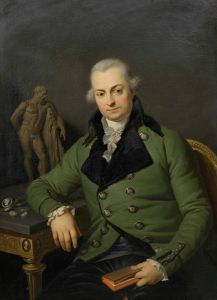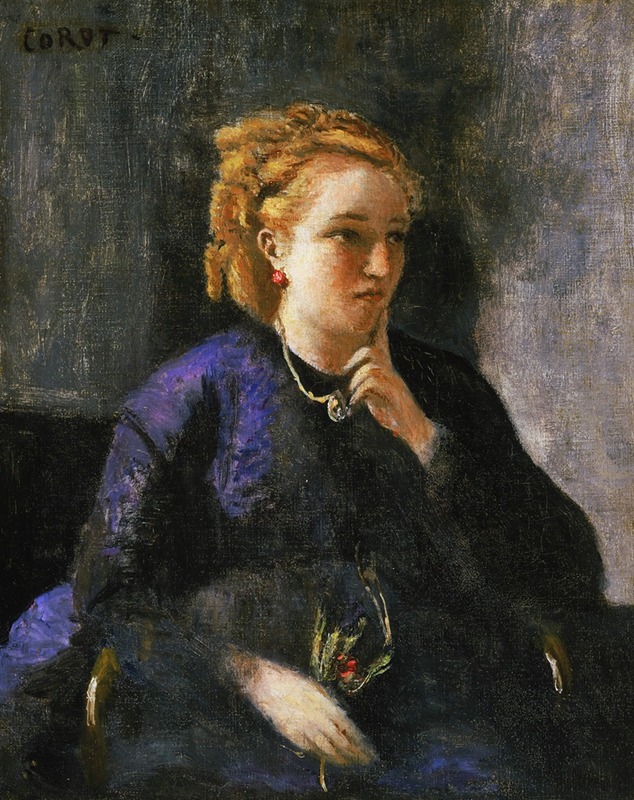
Portrait of a Woman
A hand-painted replica of Jean-Baptiste-Camille Corot’s masterpiece Portrait of a Woman, meticulously crafted by professional artists to capture the true essence of the original. Each piece is created with museum-quality canvas and rare mineral pigments, carefully painted by experienced artists with delicate brushstrokes and rich, layered colors to perfectly recreate the texture of the original artwork. Unlike machine-printed reproductions, this hand-painted version brings the painting to life, infused with the artist’s emotions and skill in every stroke. Whether for personal collection or home decoration, it instantly elevates the artistic atmosphere of any space.
Jean-Baptiste-Camille Corot, a pivotal figure in landscape painting, also made significant contributions to portraiture, as exemplified by his work "Portrait of a Woman." Corot, born in Paris in 1796, was a leading figure in the Barbizon School, which emphasized naturalism and the depiction of rural scenes. However, his oeuvre also includes a number of portraits that reveal his versatility and depth as an artist.
"Portrait of a Woman" is one of Corot's notable works in portraiture. Although Corot is primarily celebrated for his landscapes, his portraits are equally compelling, characterized by their subtlety and introspection. This particular painting showcases Corot's ability to capture the essence of his subjects with a delicate touch and a keen eye for detail. The portrait is believed to have been painted in the latter part of Corot's career, a period when he increasingly turned his attention to capturing the human figure.
The painting depicts a woman seated, her gaze directed slightly away from the viewer, which imbues the work with a sense of introspection and quiet dignity. Corot's use of soft, muted colors and gentle brushstrokes creates a serene and contemplative atmosphere. The background is typically understated, allowing the viewer to focus entirely on the subject's expression and posture. This approach is consistent with Corot's broader artistic philosophy, which favored simplicity and emotional resonance over elaborate detail.
Corot's portraits, including "Portrait of a Woman," often reflect his interest in capturing the inner life of his subjects. Unlike many of his contemporaries who focused on grand historical or mythological themes, Corot's portraits are intimate and personal. They reveal his fascination with the subtleties of human expression and the quiet beauty of everyday life. This focus on the individual and the personal is a hallmark of Corot's portraiture and distinguishes his work from that of other artists of his time.
The identity of the woman in "Portrait of a Woman" is not definitively known, which is not uncommon in Corot's portraits. He often painted friends, family members, or models, but rarely provided detailed information about them. This anonymity adds an element of universality to the work, allowing viewers to engage with the painting on a personal level, free from the constraints of specific historical or biographical context.
Corot's technique in this portrait, as in many of his works, is characterized by a delicate balance between realism and idealization. His brushwork is fluid and expressive, capturing the nuances of light and shadow with remarkable subtlety. This technique not only highlights the physical features of the subject but also conveys a sense of mood and atmosphere that is deeply evocative.
"Portrait of a Woman" exemplifies Corot's mastery of portraiture and his ability to convey the complexity of human emotion through simple yet profound means. It stands as a testament to his skill as an artist and his deep understanding of the human condition. While Corot's landscapes have long been celebrated for their influence on the Impressionists, his portraits continue to be appreciated for their quiet beauty and emotional depth.
In summary, "Portrait of a Woman" is a significant work within Jean-Baptiste-Camille Corot's body of portraiture. It reflects his unique approach to capturing the essence of his subjects and his commitment to portraying the subtle beauty of human expression. Through this painting, Corot invites viewers to contemplate the inner world of the subject, offering a glimpse into the timeless and universal aspects of human experience.





